Close your eyes and picture the gadget aisle at SM Cyberzone on a payday weekend. Neon signs are everywhere, sales reps chirp “Sir/Ma’am, pa-try po,” and every other shelf promises the most powerful, the lightest, the smartest machine of the year. Overwhelming? Absolutely. But here’s the secret: you only need one laptop, and it doesn’t have to break the bank—or your sanity.
Grab a merienda, park yourself somewhere cool (the May heat index is no joke), and let’s untangle the specs, marketing buzz, and 12-month “zero-interest” temptations. By the end of this read, you’ll know exactly which boxes to tick, which red flags to dodge, and which hype trains to ignore.

Editor
Lloyd Kelly Miralles chevron_right
Table of Contents
Start with your daily grind, not the spec sheet

Ask three blunt questions:
- What apps do you open before 10 a.m.?
- How often do you move from one outlet to another?
- What files clog your storage today?
Everything else—CPU tiers, GPU wattage, RAM channels—flows from those answers.
|
Profile |
Typical workload |
Must-have |
Nice-to-have |
|
Student |
Docs, Zoom, Canva, Netflix |
8 GB RAM, 256 GB SSD, Wi-Fi 6 |
16 GB RAM for heavy Canva or coding; spill-resistant keyboard |
|
Office multitasker |
20 Chrome tabs, Excel pivots, Teams calls |
16 GB RAM, modern CPU with AI offload |
Touchscreen + stylus for quick mark-ups |
|
Content creator |
4K editing, Lightroom, After Effects |
32 GB RAM, fast GPU, color-accurate display |
SD-card slot, 2 TB NVMe SSD |
|
Gamer/Streamer |
AAA titles, OBS capture |
Discrete RTX/ Radeon GPU, 144 Hz screen, dual-fan cooling |
Mechanical keyboard, VRR support |
|
Road warrior |
Docs, VPN, frequent flights |
<1.2 kg chassis, 15-hour battery, eSIM LTE |
2-in-1 hinge, OLED panel |
Mini-story: A friend bought a “gaming” laptop on Lazada because sale!—only to realize his real day-to-day is accounting spreadsheets. Now he hauls 2.5 kg of RGB heat just to balance budgets. Lesson? Buy for 90 % of your actual life, not the fantasy 10 % you’ll use once a quarter.
Processor talk without the headache
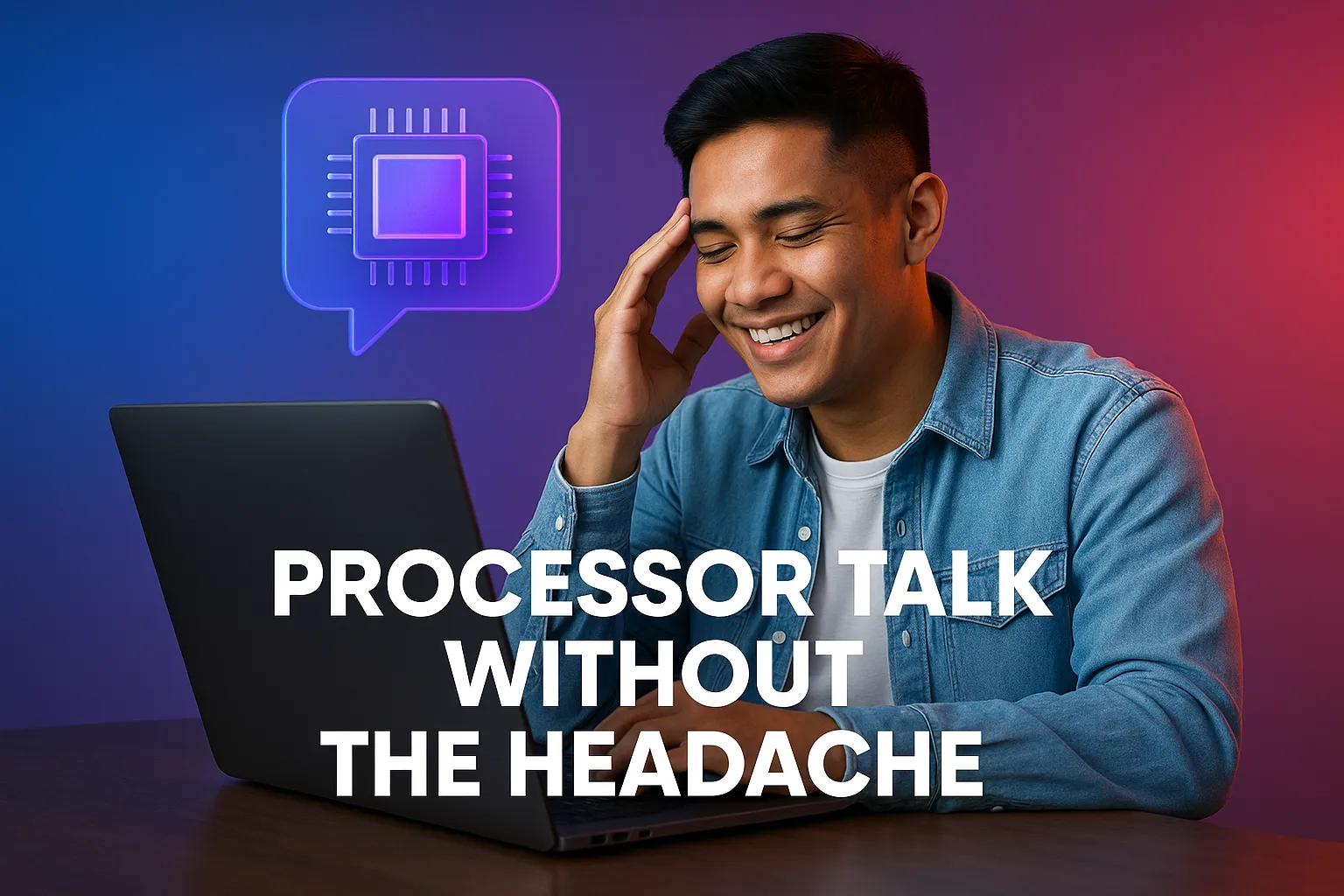
Intel, AMD, Apple, Qualcomm—who’s who in 2025?
|
Brand |
Latest mobile line |
Why it matters |
|
Intel |
Core Ultra 200 “Lunar Lake” |
Better battery and Arc graphics in slim form factors |
|
AMD |
Ryzen AI 300 “Strix Point” |
Strong multicore, built-in NPU for Windows Copilot |
|
Qualcomm |
Snapdragon X Elite |
First Arm chip that beats older Intel chips in sustained tasks, all-day battery |
|
Apple |
M4 SoC (MacBook Air/Pro) |
Unified memory, silent cooling, 18-hour real-world battery |
For everyday Ubuntu or Chrome OS machines, budget Intel Pentium/AMD Athlon still exist, but Windows 11 now sings on at least a modern Core i5 or Ryzen 5. And yes, Windows 10 reaches end-of-support on Oct 14 2025, so don’t saddle yourself with something that can’t make the jump.
Quick tip: Chasing maximum clock speed is so 2018. Look at efficiency cores and AI TOPS numbers instead; they decide how quietly your laptop runs while editing photos or transcribing meetings.
RAM: the breathing room you feel but can’t see
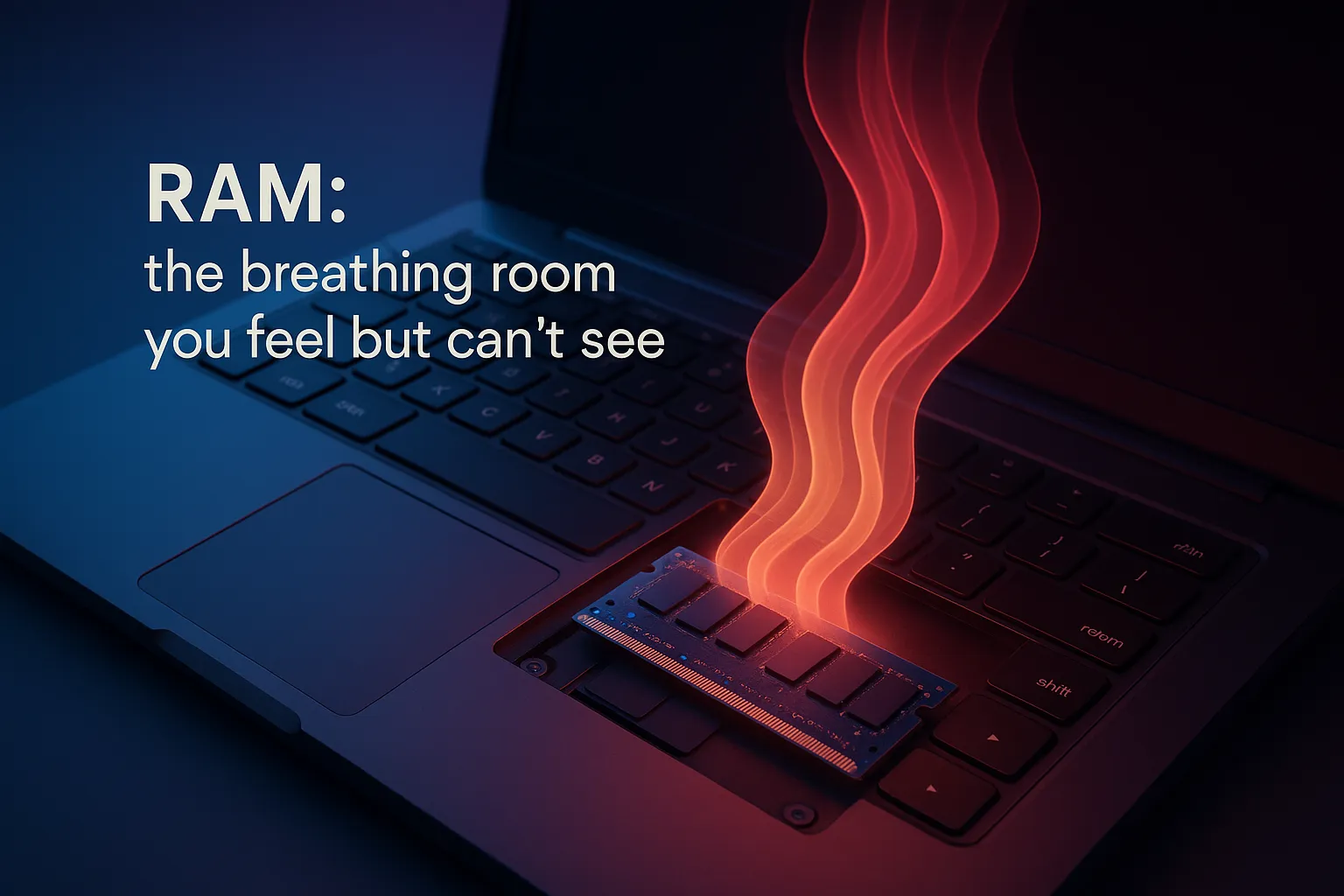
In 2025, the line is simple:
- 8 GB – only if you barely multitask
- 16 GB – sweet spot for most workers and students
- 32 GB + – creators, devs, heavy Chrome extension addicts
If the model you love has soldered memory (common on thin MacBooks and Copilot+ PCs), buy higher capacity upfront—there’s no later upgrade party.
Storage: where speed meets stash space
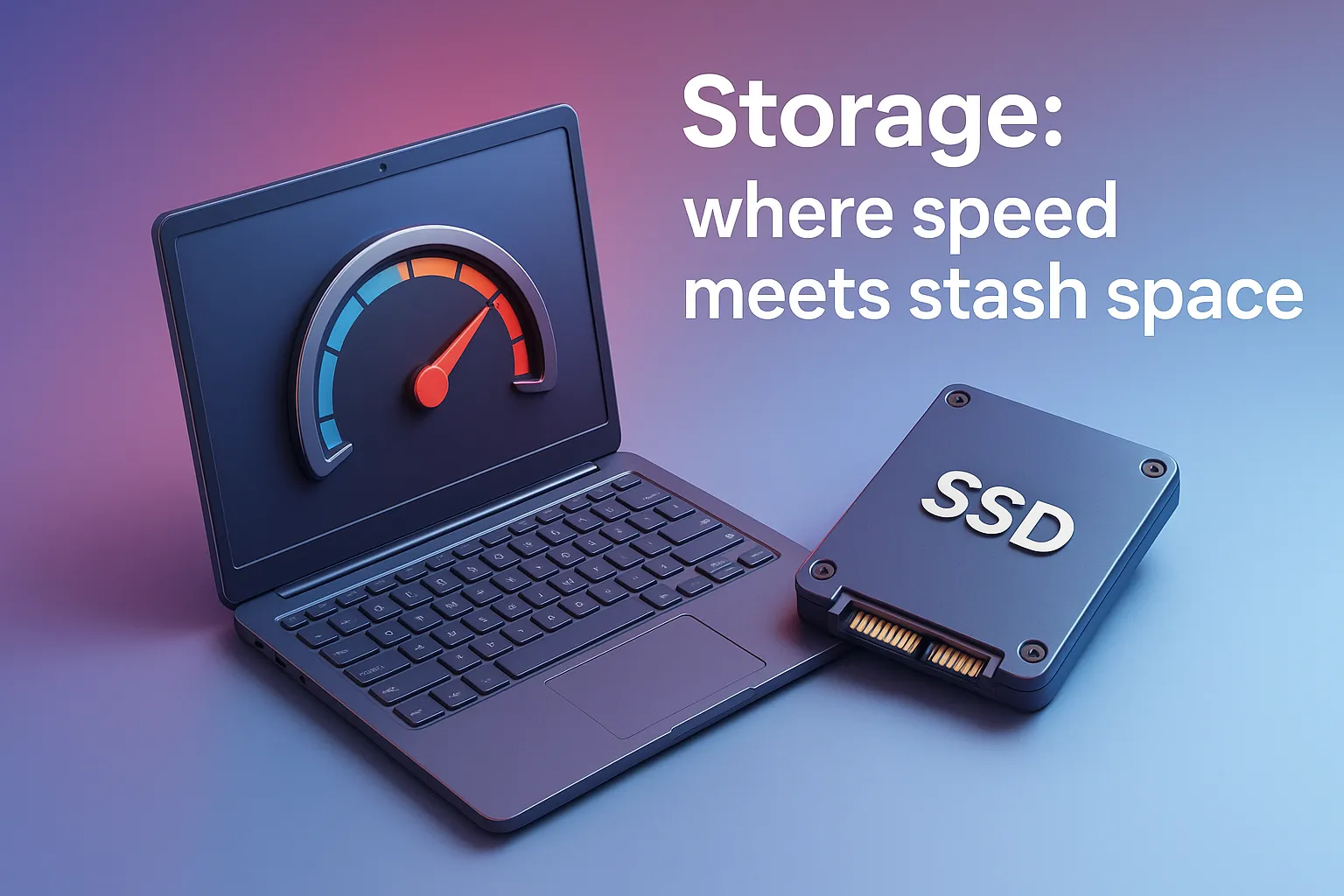
- Stick with SSDs. Mechanical drives are for external backups now.
- PCIe 4.0 NVMe is mainstream; PCIe 5.0 is overkill unless you handle 8K RED footage.
- 512 GB minimum if you do more than cloud docs; 1 TB feels comfy once you stack video lectures, Steam games, and Lightroom catalogs.
Side quest: Check if your chosen laptop has a second M.2 slot. Adding a cheap 1 TB stick later costs less than spec-ing the flagship SKU today.
Display: the window to your workflow
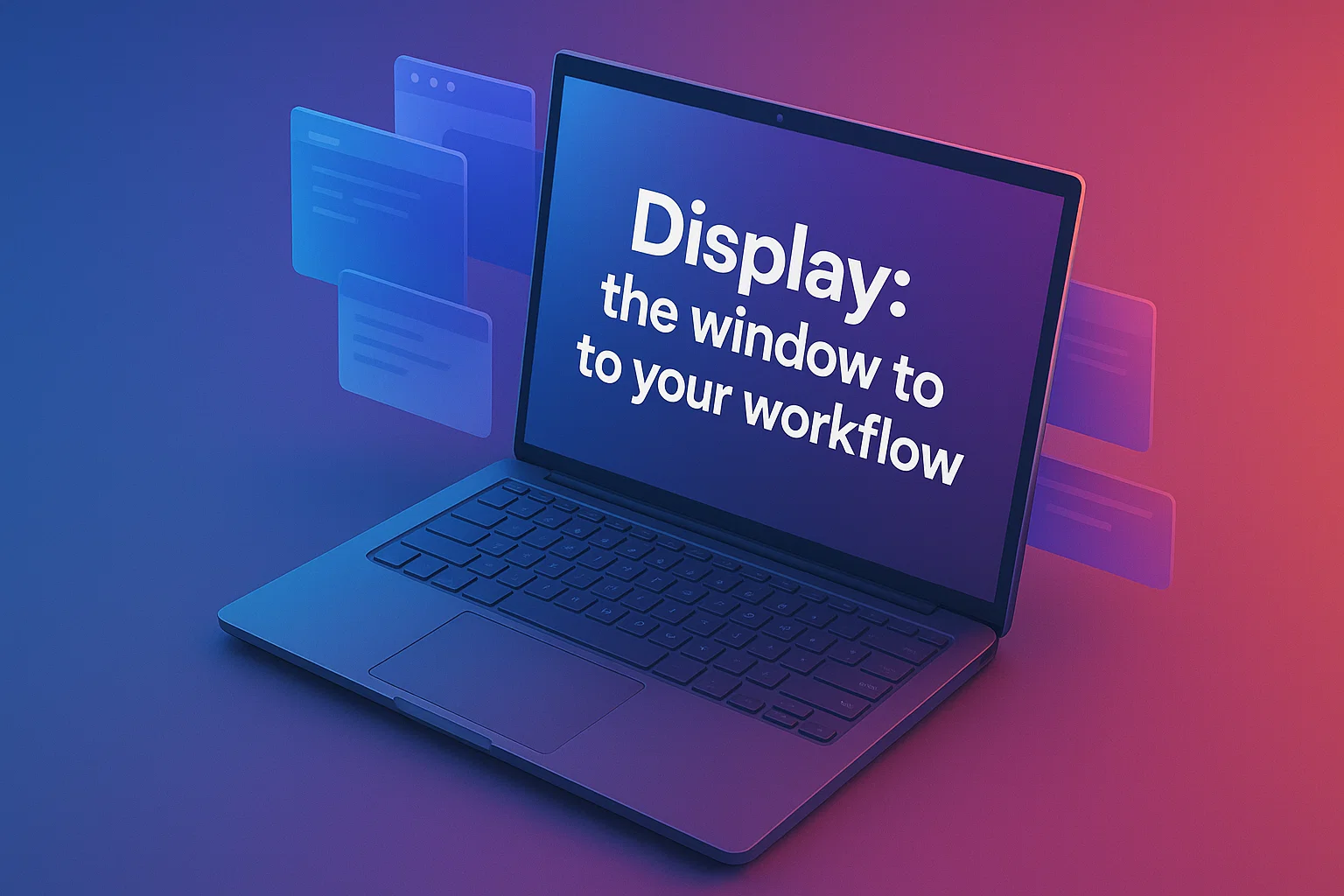
|
Spec |
Why you care |
|
Size & ratio |
14–15 inch 16:10 panels balance portability and vertical space for code/Docs. |
|
Resolution |
1080p is fine at 14 in., but 2.8K (2880×1800) OLED is jaw-dropping for movies. |
|
Refresh rate |
120 Hz+ feels buttery for scrolling, not just gaming. Once you go high-refresh, 60 Hz looks jittery. |
|
Panel tech |
OLED = inky blacks and HDR movies. IPS is cheaper and brighter outdoors. Mini-LED in high-end rigs combines both. |
If you create content, aim for 100 % DCI-P3 coverage and at least 400 nits. For Netflix at night? OLED all the way—just keep brightness under 70 % to prevent burn-in.
Battery life vs. charger brick life
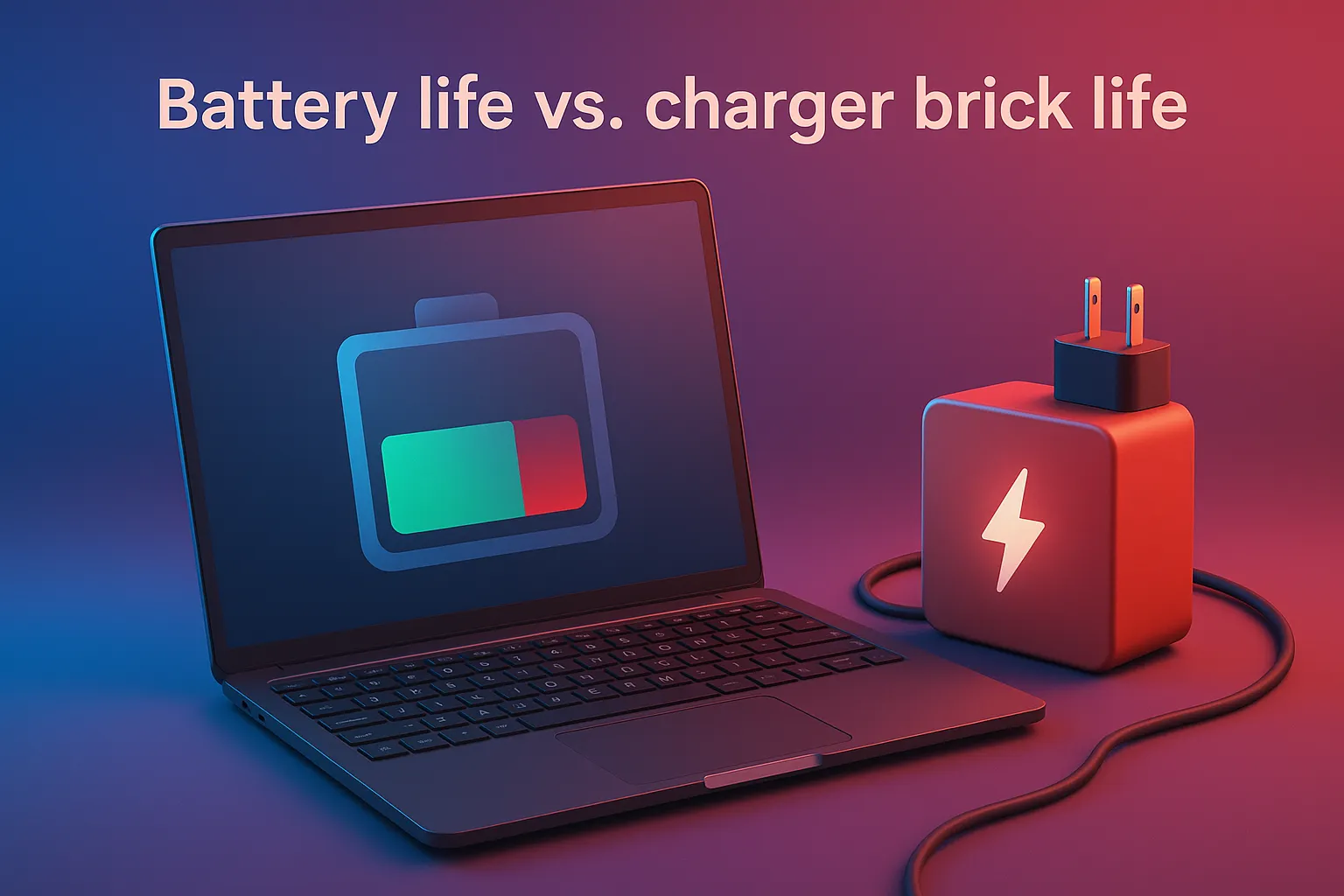
A spec sheet promising “20 hours” usually means 12 hours of real use with Wi-Fi on. The wildcard is efficiency, not raw watt-hours. Apple’s M4 Air and Qualcomm X PCs sip power; older gaming rigs gulp it. If you commute daily, carry a 65 W USB-C PD charger that doubles as your phone.
Pro move: Check the wattage your laptop accepts, not just the stock charger rating. Some 140 W bricks can’t be replaced by a cheap 65 W block without throttling performance to turtle mode.
Ports, keyboards, and other “liveability” bits
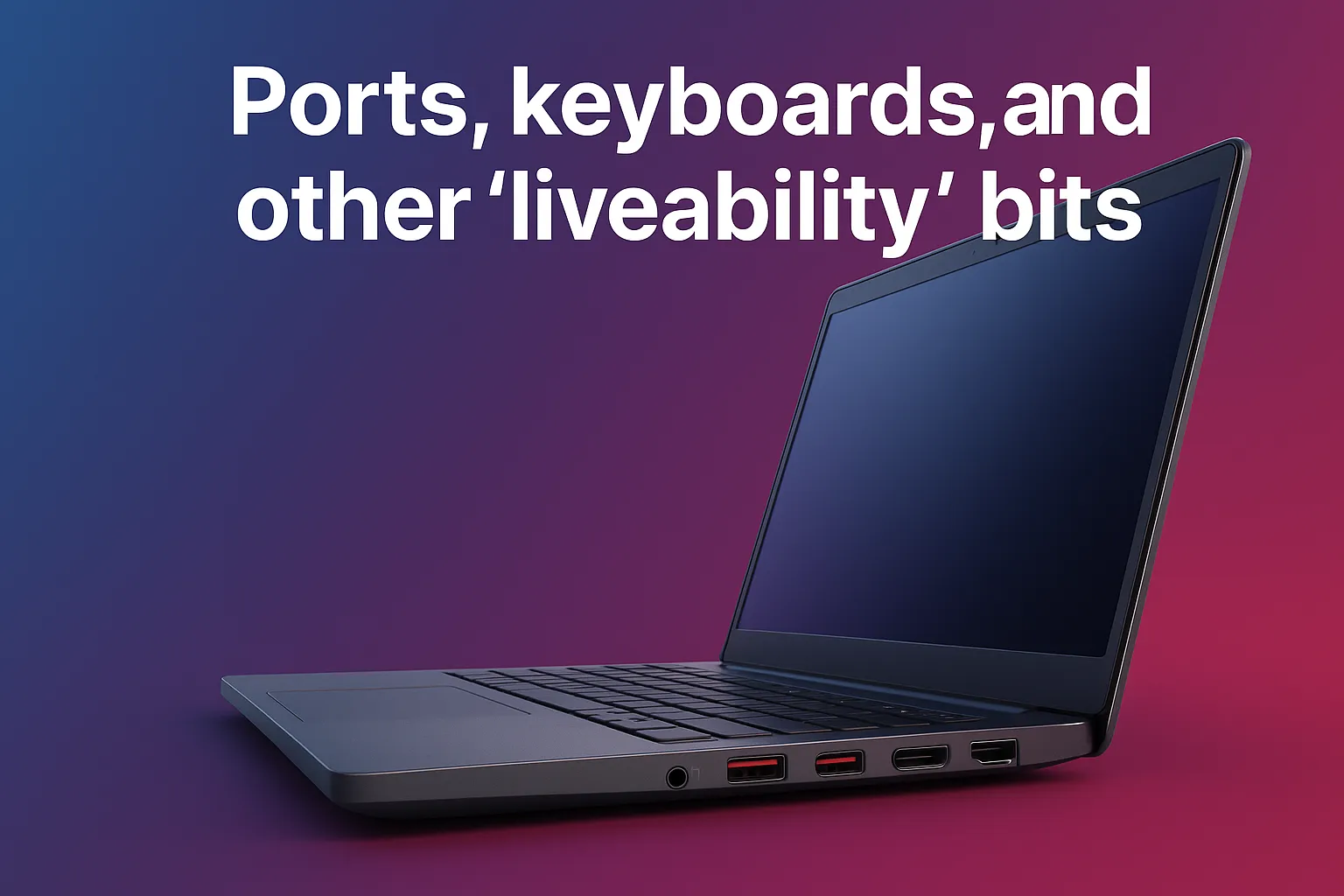
- USB-A still matters for flash drives in government offices.
- HDMI 2.1 saves you from dongle roulette when you face that ancient projector in a client’s boardroom.
- Full-size SD slots are a photographer’s best friend.
- Keyboard travel of 1.3 mm or more feels nicer for marathon typing sessions (looking at you, butterfly-key survivors).
- Webcam – 1080p minimum; an IR sensor adds Windows Hello/Face ID unlock.
Test-type in store if possible. What good is a 120 Hz OLED if the keyboard cramps your hands by slide 30?
Ecosystem and operating-system realities
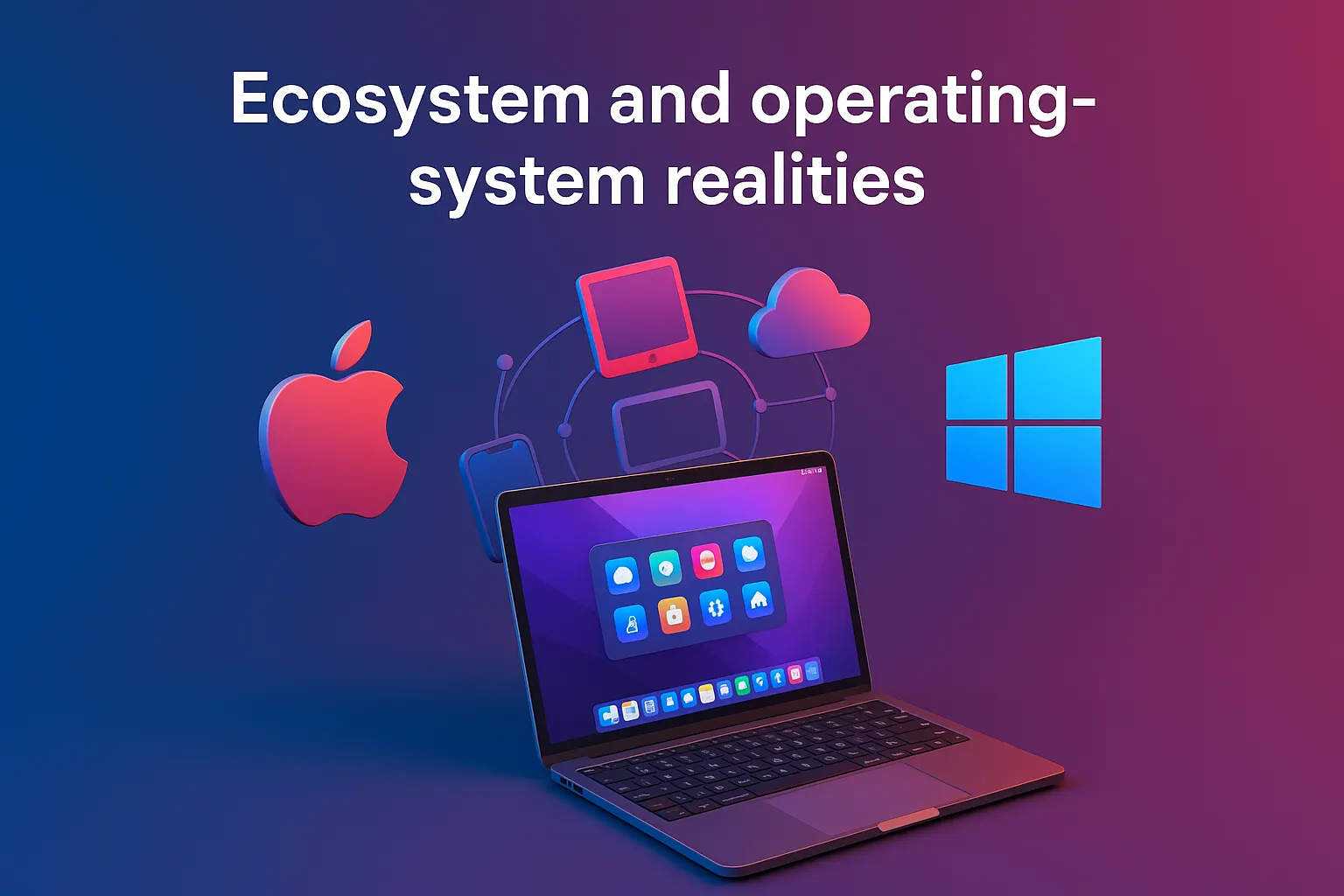
- Windows 11 Copilot+ – deep AI integration, widest app catalog, broad local service centers.
- macOS Sequoia – crazy battery, best creative software stack, but AppleCare centers cluster in big cities.
- Chrome OS 126+ – hands-off updates, 10-year support promises, yet limited offline pro apps.
- Linux – perfect for devs, but remember that BIR e-forms still prefer Windows-only ActiveX controls (sigh).
Pick the ecosystem that plays nice with your phone and existing accessories. Airdrop or Nearby Share can save hours each week.
Budget tips: haggle, bundle, finance

- Seasonal promos – Back-to-School (June) and 13th-Month-Pay (December) bundles often throw in legit Office 365, extended warranty, or backpacks worth ₱3 k.
- Credit-card installment – Zero-interest is common, but watch out for hidden processing fees.
- Student/educator discounts – Apple, Microsoft, and some local retailers knock off 5-10 %. You just need a school ID or DepEd e-mail.
- Refurb/previous-gen – Last year’s M3 MacBook Air or Intel Core Ultra 155H laptops drop in price once shiny M4/Lunar Lake machines arrive. Performance is still stellar.
Future-proofing: think two OS updates ahead
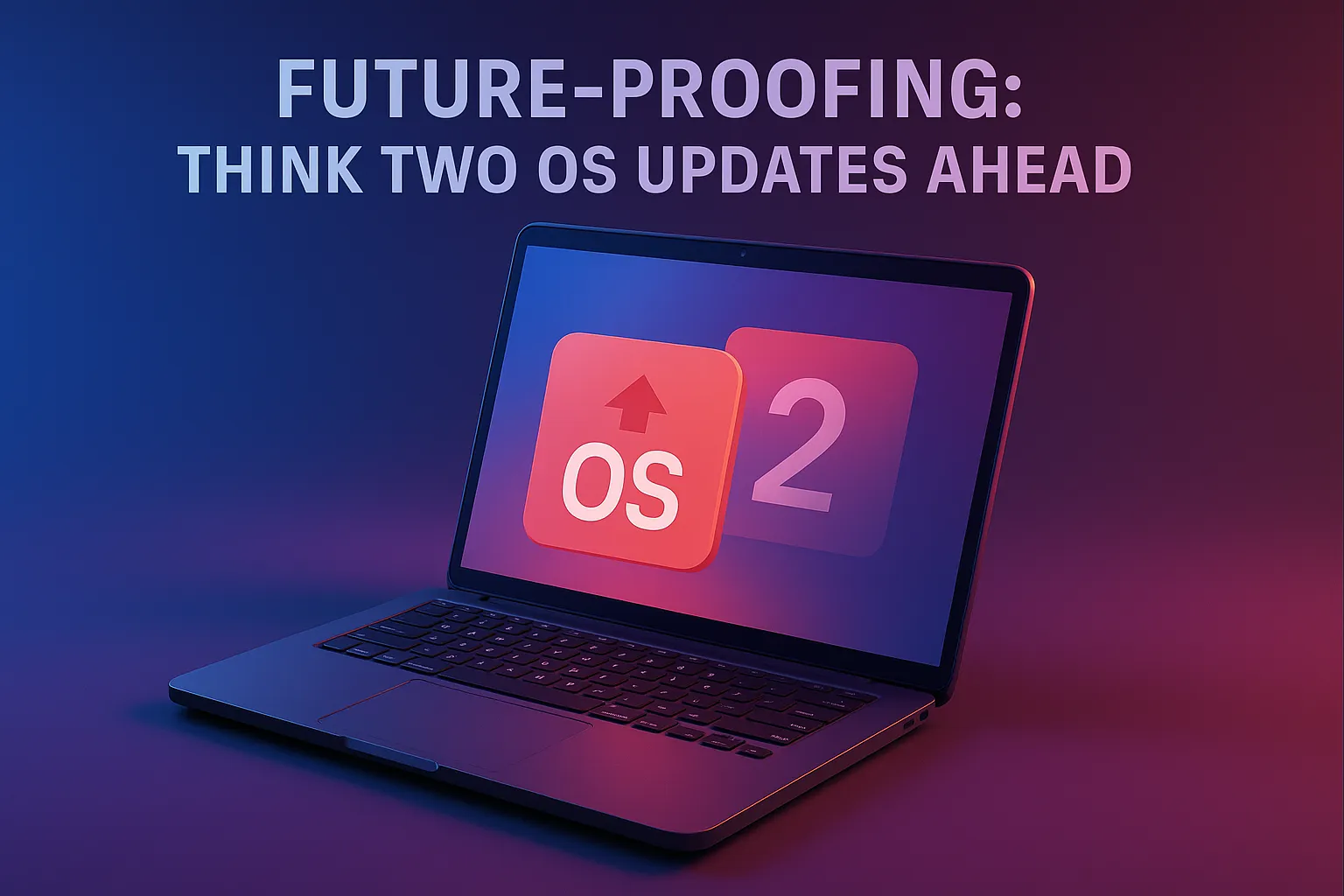
- Windows 12 rumors point to heavier AI workloads; 16 GB RAM will be baseline.
- USB4 v2 (80 Gbps) is landing on premium rigs later this year—handy for 8K displays and ultra-fast external SSDs.
- Wi-Fi 7 routers are expensive today but will be mainstream by 2026; laptops with Intel BE200 or Qualcomm FastConnect 7900 cards are ready.
- Repairability – Framework Laptop 16, Dell Latitude 7450, and Lenovo ThinkBook 14p Gen 5 use modular daughterboards. Pay a bit more now, swap ports or batteries yourself later.
Conclusion
Choosing a laptop in 2025 is like ordering halo-halo: the menu looks chaotic until you know what ingredients you actually enjoy. Maybe you’re all about the ube ice cream (OLED screen), maybe you’d rather double the leche flan (RAM), or maybe you’re fine with fewer mix-ins so long as the serving bowl (battery) is big.
